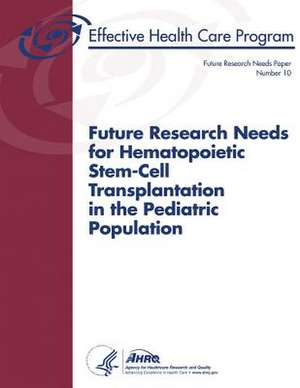Future Research Needs for Hematopoietic Stem-Cell Transplantation in the Pediatric Population
Autor U. S. Department of Heal Human Services, Agency for Healthcare Resea And Qualityen Limba Engleză Paperback
Preț: 116.77 lei
Preț vechi: 122.91 lei
-5% Nou
Puncte Express: 175
Preț estimativ în valută:
22.35€ • 24.29$ • 18.79£
22.35€ • 24.29$ • 18.79£
Carte disponibilă
Livrare economică 31 martie-14 aprilie
Preluare comenzi: 021 569.72.76
Specificații
ISBN-13: 9781484974384
ISBN-10: 1484974387
Pagini: 88
Dimensiuni: 216 x 280 x 5 mm
Greutate: 0.23 kg
Editura: CREATESPACE
ISBN-10: 1484974387
Pagini: 88
Dimensiuni: 216 x 280 x 5 mm
Greutate: 0.23 kg
Editura: CREATESPACE
